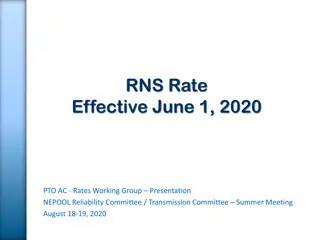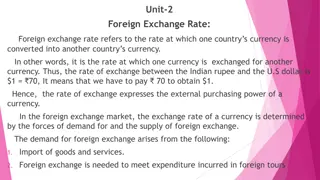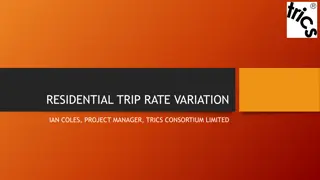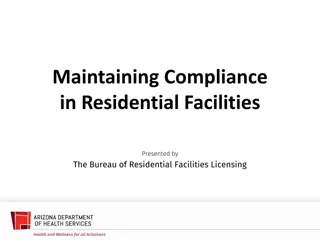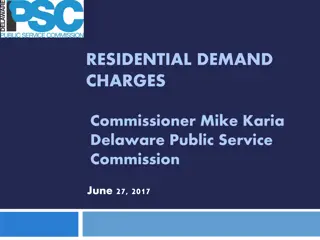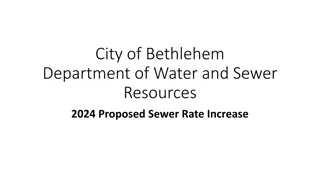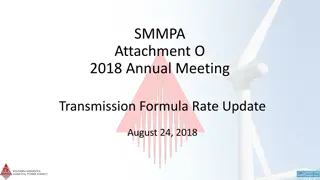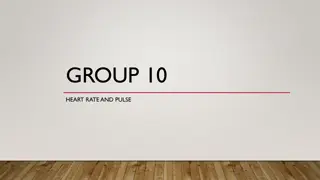Understanding Residential Rate Design Trends
Explore the significant impact of rate design on residential utility bills, focusing on fixed charges, proposed increases, and trends seen in Q2 2016. Learn about existing and proposed fixed charge amounts, decisions made by utilities, and the overall landscape of residential rate design. Stay informed on key developments shaping energy policy and consumer costs.
Download Presentation

Please find below an Image/Link to download the presentation.
The content on the website is provided AS IS for your information and personal use only. It may not be sold, licensed, or shared on other websites without obtaining consent from the author. Download presentation by click this link. If you encounter any issues during the download, it is possible that the publisher has removed the file from their server.
E N D
Presentation Transcript
Rate Design Matters A Lot Rate Design Matters A Lot Autumn Proudlove Senior Policy Analyst NC Clean Energy Technology Center DC Solar Power International September 14, 2016
Residential Rate Design Action: Q1 & Q2 2016 Residential Rate Design Action: Q1 & Q2 2016 DC Q1 or Q2 2016 action No recent action Utilities in 30 States + DC took action on residential fixed charges or demand charges
Fixed Charges A fixed charge - also known as a customer charge is typically a flat monthly fee on a customer s bill. Fixed charges may also be tiered (different fee based on usage bracket) or a flat fee per day. Fixed charges can typically not be offset by net metering credits.
Q2 2016 Proposed Increases to Residential Fixed Charges Q2 2016 Proposed Increases to Residential Fixed Charges Customer Credits for Monthly Net Excess Generation (NEG) Under Net Metering DC No Proposed Fixed Charge Increase in Q2 2016 1 Pending Fixed Charge Increase in Q2 2016 1 Decision on a Fixed Charge Increase in Q2 2016 42 Utilities in 25 States + DC had pending or decided requests to increase residential fixed charges during Q2 2016
Fixed Charge Increases: Q2 2016 42 utilities in 25 states + DC had pending or decided proposals to increase residential fixed charges by at least 10% Median existing fixed charge = $8.25 Median proposed fixed charge = $13.76 Median proposed increase = 50% 6 DECISIONS in Q2 2016: 4 utilities not granted any increase, 2 granted increase below requested amount NO utilities granted full requested increase
Fixed Charge Trends Since Q4 2014: 81 pending or decided proposals to increase fixed charges by at least 10% from 71 investor- owned utilities across 34 states No Proposed Fixed Charge Increase 1 Pending or Decided Fixed Charge Increase from an IOU 1 Pending or Decided Fixed Charge Increase from a Large Muni or Co-op (>100,000 customers)
Fixed Charge Increase Proposals: %s chronologically 2014 ----- 2016
Fixed Charge Decisions No Action 46 decisions from Q4 2014 to Q2 2016 No Increase Approved Partial Increase Approved Full Increase Approved
IOU Fixed Charge Decisions Q4 2014 Q2 2016
Fixed Charge Decisions: Partial Increases Fixed Charge Decisions: Partial Increases [Q4 2014 Q2 2016] 50% 67%; 40% 75%; 68% CT: 66% 48% 40% MD: 91% 82% 60%; 83% 63% PA: 66% 47% 59% 49% 73% 29% No partial increases granted 1%-24% of requested increase granted 25%-49% of requested increase granted 50%-74% of requested increase granted 75%-99% of requested increase granted
Multiple Requests 11 utilities have had more than one fixed charge increase request pending since Q4 2014 4 initial requests denied, came back & requested smaller increase 2 initial requests denied, came back & requested larger increase 4 received partial increases, came back & requested increase larger than first proposal 1 received full increase, came back & received second partial increase Some utilities trying again with a smaller request Others getting a partial increase and trying again with a larger request
Fixed Charge Trends Not seeing a slowdown in utility requests to increase fixed charges Very few utilities are being granted their full increase even split between no increase & partial increase Those being granted only a partial increase are getting, on average, about 60% of their requested increase
Demand Charges A demand charge is typically a monthly charge based on a customer s maximum demand in kW during the billing period. Demand charges are typically based on a customer s non- coincident peak demand, but may be designed to be based on coincident peak demand. Like fixed charges, demand charges cannot typically be offset by net metering credits.
Customer Credits for Monthly Net Excess Generation (NEG) Under Net MeteringQ2 2016 Proposed Demand Charges on Residential Solar Customers Q2 2016 Proposed Demand Charges on Residential Solar Customers No Proposed Demand Charge in Q2 2016 1 Pending Demand Charge in Q2 2016 1 Decision on a Demand Charge in Q2 2016 7 Utilities in 5 States had pending demand charge requests during Q2 2016
Since Q4 2014: Proposed Demand Charges on Residential Solar Customers Since Q4 2014: Proposed Demand Charges on Residential Solar Customers Customer Credits for Monthly Net Excess Generation (NEG) Under Net Metering No Demand Charge Proposal 1 Proposed Demand Charge 14 Utilities in 10 States had pending demand charge requests during since Q4 2014
Demand Charges: Decisions Since Q4 2014 (when we started tracking), no PUC has approved a demand charge on residential solar customers of an IOU. Only munis and co-ops have implemented demand charges on these customers. Salt River Project (AZ): $6.95/kW Lakeland Electric (FL): $4.80/kW Intermountain Rural Electric Assn. (CO): $4.04/kW Delaying decisions until broader proceedings are complete UNS in Arizona Unitil in New Hampshire
Demand Charge Trends Very few proposals being put forward right now, but a lot of discussion No residential demand charges yet approved for investor-owned utilities Some recent collaborative efforts to reach settlement agreements or efforts to look at the bigger picture before making a decision






